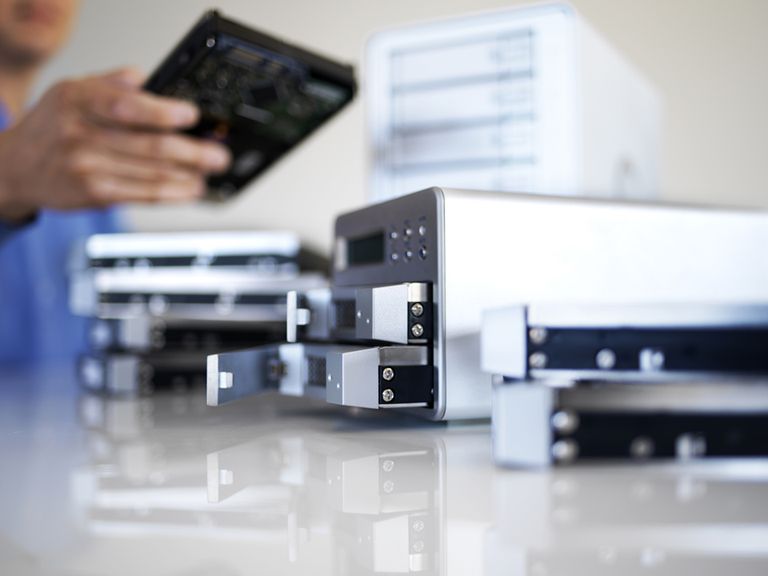RAID storage systems are attractive to businesses and personal users because they offer large storage solutions for a lower price point. You also gain improved reliability and data security–depending on the RAID level you choose.
Here’s a closer look at what RAID systems are, their benefits, and versatility.
What is RAID Storage Systems?
RAID, otherwise known as Redundant Array of Independent Disks, is a storage solution that allows you to use multiple disks to spread data. The purpose of RAID systems is to increase reliability and performance through the use of multiple outlets.
Here’s how it works: say you combine two hard drives on your personal computer using a RAID controller, not only have you doubled the storage; you also double the processing time as two hard drives can split loading the data.
Another huge benefit to RAID systems is their ability to clone data onto multiple drives, so if one fails, you still have access to that data. This can improve your data security and performance depending on the setup you use.
Ways to Use a RAID Storage System
In a hardware setup, you would connect the RAID controller to your personal computer or server. From there, RAID would manage all settings from writing data to storage. Your computer or server would read RAID as a singular unit instead of multiple data disks so you wouldn’t have to worry about manually assigning data.
Another option is to use a software RAID. With software RAID systems, you might notice slower performance than with a hardware RAID due to the software having to run with multiple programs at the same time. These systems take time and size to run, which creates this lag.
RAID’s Versatility
Part of the allure surrounding RAID systems is the multiple setup options there are. To give you insight into how the levels work, here’s a look at a few:
RAID 0
Raid 0 is the most basic level available and it combines two or more storage drives into one larger one. How it achieves this is through stripping, where the controller breaks the data up into chunks and assigns it to drive 1 until it fills up, then drive 2 and so on.
The advantage to this approach is faster performance since multiple drives break down the data concurrently. While you receive faster writing speeds, you sacrifice security. If the first drive becomes corrupted the data will be inaccessible.
RAID 1
RAID 1 uses mirroring to write the same data from the first drive to the second one. This promotes better security since if one drive fails you can access the data from the other drive.
RAID 5
RAID 5 requires at minimum three drives because it uses parity to distribute data to all drives connected to the controller. A unique aspect of RAID 5 is you can set up a hot spare, which is an empty drive to fill in if another drive fails. When one does, the controller writes the data onto the hot spare.
As you can see, RAID systems are versatile to meet your storage needs. And depending on which setup you choose, you can gain better performance, improved data security or both.
Meanwhile, if you ever encounter data loss with RAID systems, our team can help you get it back. Not only do we employ engineers with a wealth of experience in data recovery, we’ve earned accolades from many reputable publications and organizations for the work we’ve done.
What does this mean to you? It means you’ll receive fast service that’s also transparent. If for any reason we are unable to recover the data you don’t pay. So what do you have to lose? Give us a call today to take the first step towards recovering your data.
